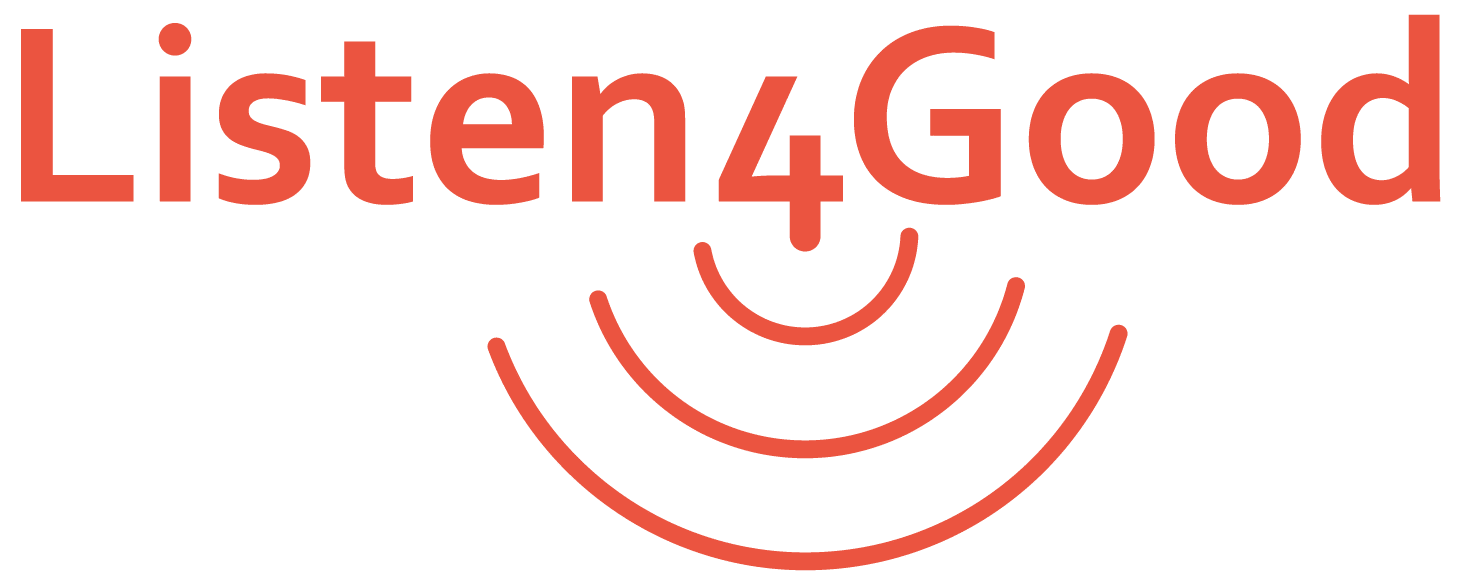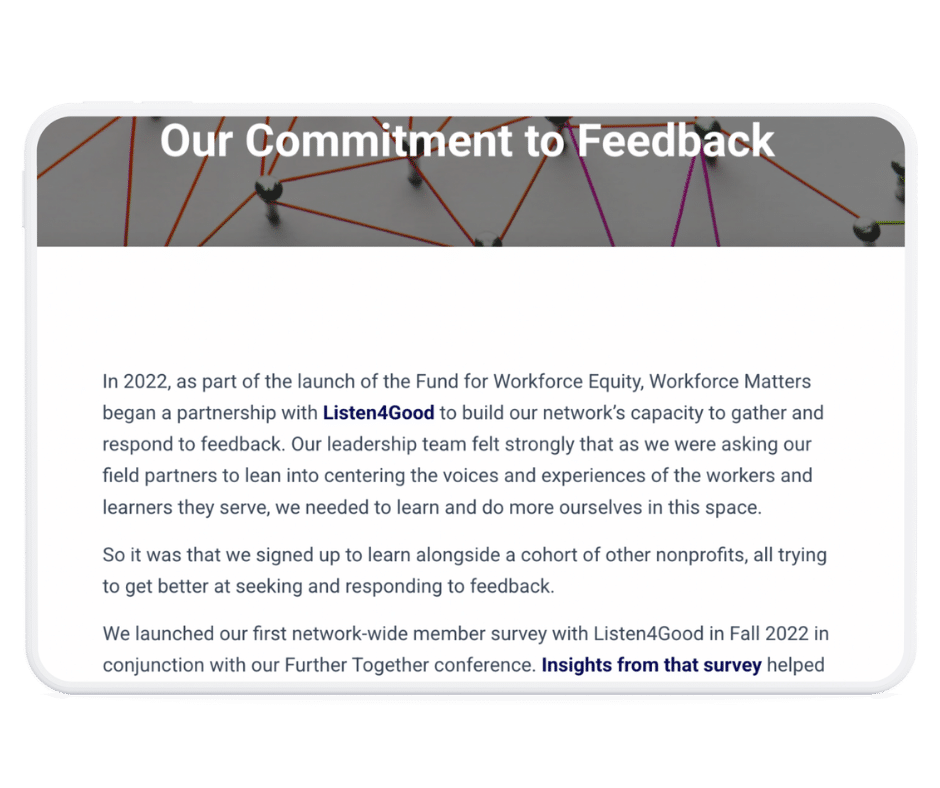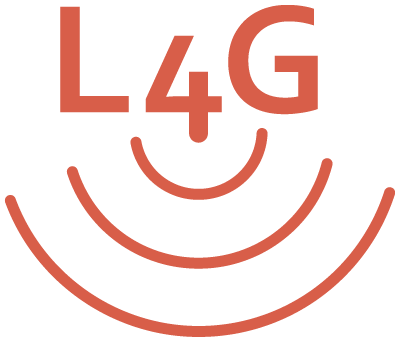- Guides & Toolkits
Toolkit: Fundraising + Communications with Feedback at the Center
October 29, 2025
- Acting on Feedback
- Closing the Loop
- Philanthropy
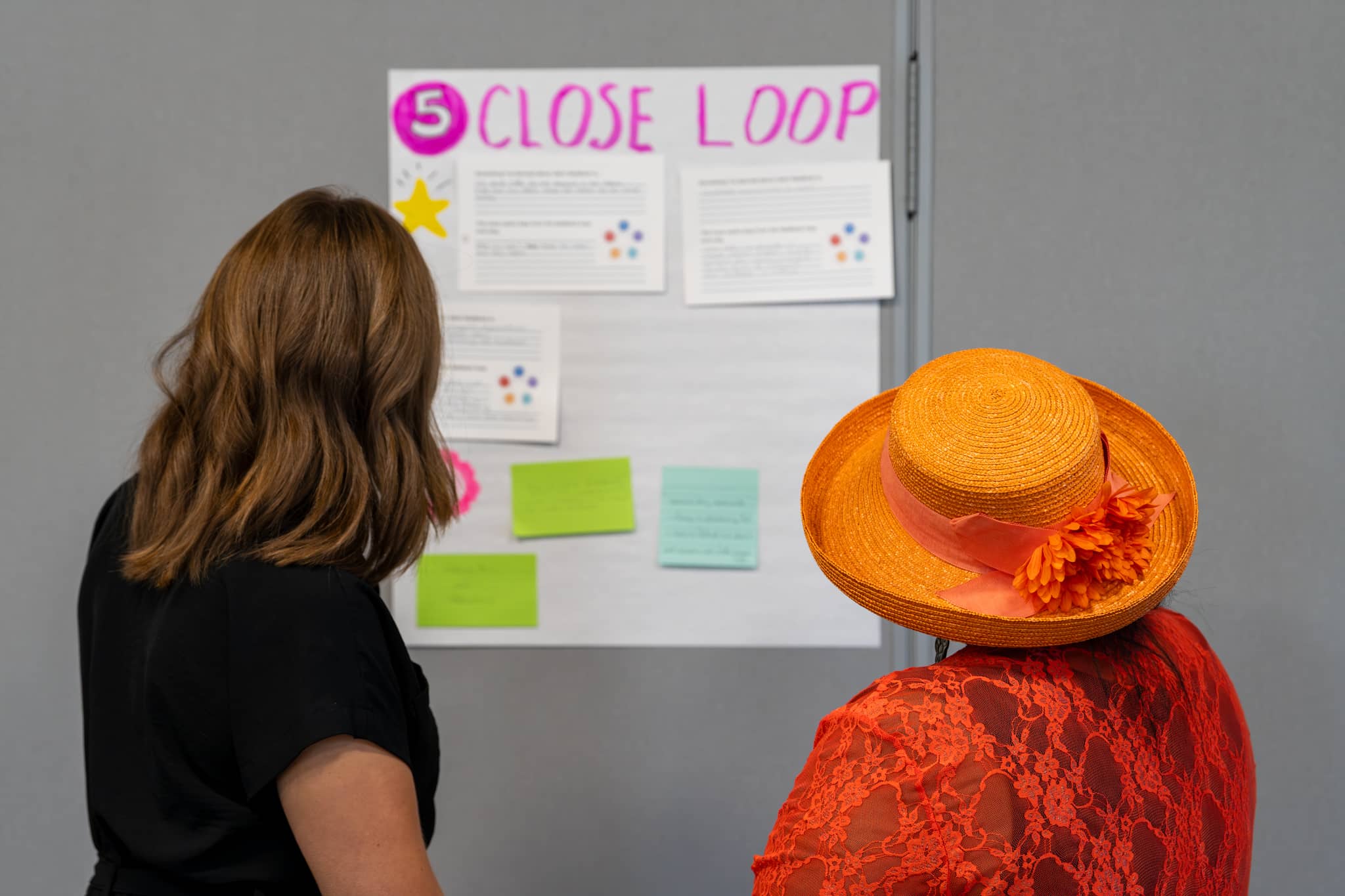
Practical tips for leveraging your Listen4Good participation to boost credibility, demonstrate your responsiveness to community, and engage funders and donors
Why Feedback Belongs in Fundraising and Communications
You need to tell your story of impact. How better than to ground it in the words and perspectives of those you serve?
Funders increasingly ask how organizations listen to the people they serve. Highlighting your participation with Listen4Good (L4G) does more than check a box. It demonstrates your commitment to centering community voice and continuous learning.
Why Naming Listen4Good Matters
Showing you participated with Listen4Good not only adds credibility to your process, it also shows that you’re investing in building your organization’s capacity.
Where to Use Feedback in Fundraising
Integrating feedback into your communications helps you close the loop, demonstrate accountability, and show how listening drives real impact across every channel. Use this chart as a guide for where to embed Listen4Good and community voice in your messaging.
| Channel | What to Add | Why it Matters |
|---|---|---|
| Grant Proposals | L4G outcomes, NPS scores, DEI practices | Signals credibility and equity focus |
| Annual Appeal | Client quotes + actions taken | Links donor giving to client impact |
| Website | ‘We Listen’ statement + CTL visual | Builds public trust and funder confidence |
| Social Media | Closing the Loop summary or quote graphic | Shows accountability and transparency |
| Donor Emails | Short update on what changed via feedback | Strengthens donor relationships |
| Board Slides | One-slide summary of L4G project | Demonstrates learning and leadership |
Templates for Grants & Reporting
Use Listen4Good in grant proposals and reporting to show how you are a) achieving impact and b) being responsive to community needs.
Capturing and sharing client feedback provides a valuable narrative to showcase how clients feel about your program and how you are staying grounded in evolving community needs.
Sample language:
“[Org Name] participated in Listen4Good, a nationally-recognized and evidence-based capacity building program, to develop our system for gathering actionable feedback from the people we serve and using that feedback to improve services.”
Annual Report, Newsletter, End of Year Appeal
- Use your Close the Loop (CTL) graphics, charts, and quotes from your Step 5 L4G dashboard to showcase how you are listening and being responsive to clients needs
- L4G provides PowerPoint/Canva templates for visual storytelling
- Bonus: Make a copy of this Presentation Slide and edit for your grant or board presentations
Sample integration points:
- Executive Letter: Highlight listening efforts and how they are advancing your organization’s equity goals
- Impact Highlights: Show what changed in response to client feedback
- Data Visuals: Showcase closing the loop efforts in a single glance
Blurb example:
“In 2025, we partnered with Listen4Good to launch our first equity-centered feedback loop. As a result, we heard from over 300 clients and made three major service changes. [List 1-2 changes]. This was part of a broader effort to integrate client voice into everything we do.”
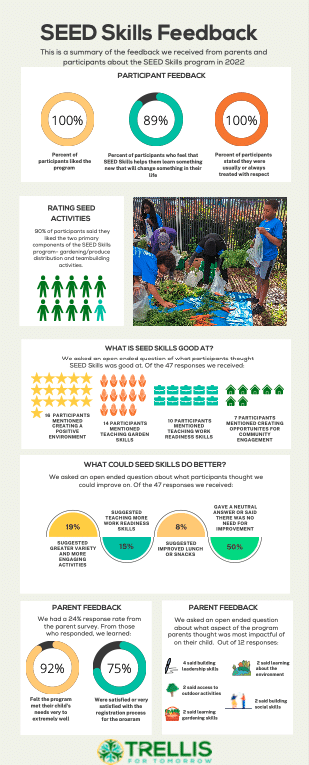
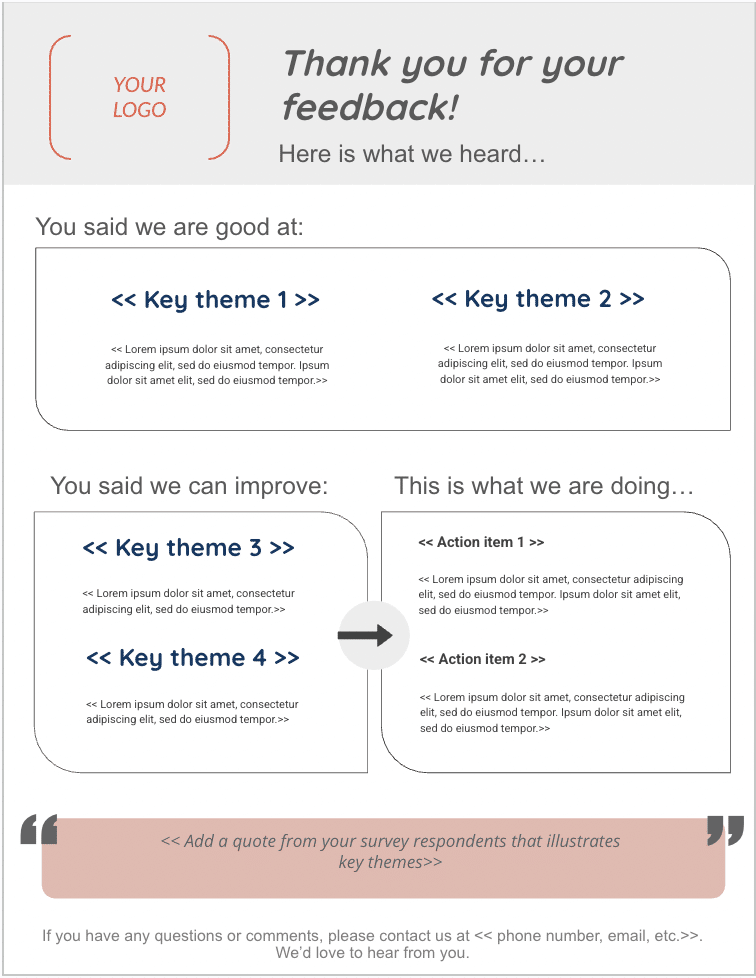
Website Updates
- Adapt the following language for a “Commitment to Listening” and/or Equity sections of your website:
Listening to our clients – learning about their needs and preferences – and acting on what we hear, is a core discipline and practice that advances our equity goals. Through robust listening, we ensure client voices are more effectively integrated into organizational decision-making, thereby leading to more responsive, inclusive, and equitable programming. [Organization name] participated with Listen4Good, a nationally-recognized and evidence-based capacity building program, to develop our equity-focused feedback system. Listen4Good’s model has been researched by third party evaluators and has been shown to improve nonprofits’ capacity to use participant feedback for more equitable service delivery.
We adhere to the following Listen4Good-codified practices for equitable and responsive feedback systems:
- Feedback must be gathered repeatedly, and in a way that prioritizes accessibility and inclusivity.
- Organizations must seek high representation rates from the communities they serve.
- Organizations should disaggregate feedback by client subgroups (especially by clients’ age, gender, or race-ethnicity), and prioritize feedback from those who’ve been historically marginalized by prevailing systems.
- Recipients of feedback must do something in response to what they hear and let the community know what they heard and what they’re doing about it.
- Organizations should create habitual practices and cultural norms that celebrate questioning and don’t let those with more positional power dictate how things are done.
- Link to your Close the Loop summary (PDF or webpage)
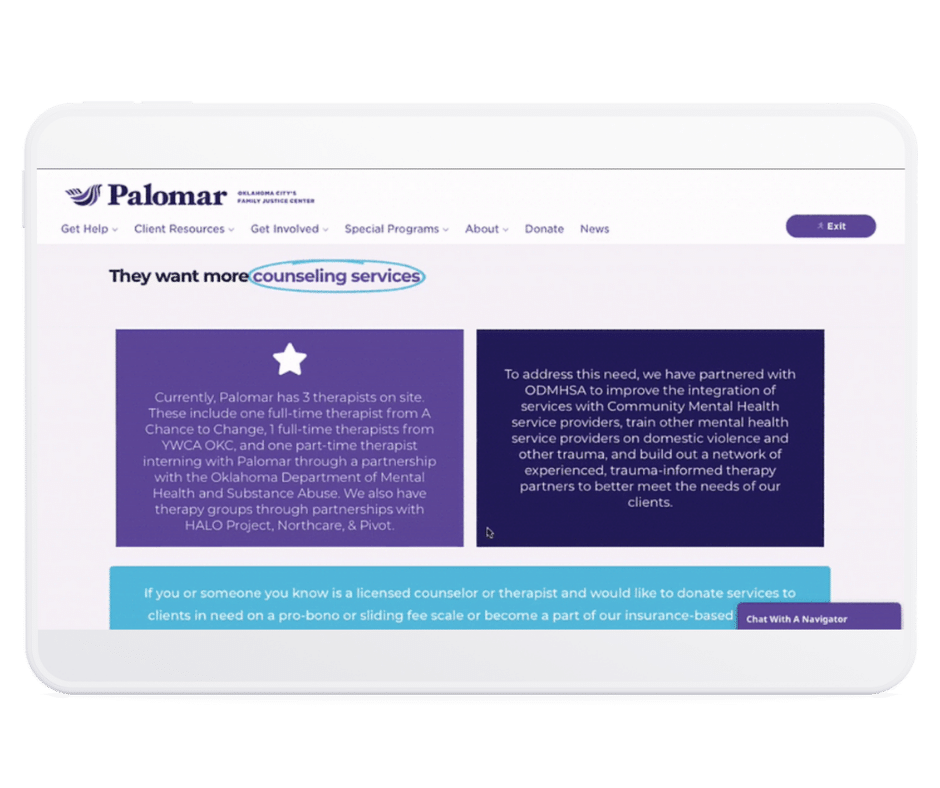
Candid & Charity Navigator:
How We Listen is a self-reported section of both organization’s Candid and Charity Navigator profiles where you can self-describe how you integrate community feedback. Update “How We Listen” via Candid — it feeds both sites.
- Mention your Listen4Good participation
- Describe a recent program change that resulted from feedback
- Follow these instructions to check off the practices you’re utilizing
Bonus: Completing this will boost your Charity Navigator score.
Fundraising Talking Points
Quick, funder-tested phrases:
- “We engaged over 200 clients in a structured feedback loop…”
- “We’re not just collecting surveys, we’re closing the loop and sharing back what we heard.”
- “Thanks to Listen4Good, we’ve built a long-term feedback system rooted in equity and learning.”
Whether you’re wrapping up an annual report, preparing for year-end fundraising, or looking to deepen engagement with your community, this toolkit will help you elevate your message through the power of listening.
